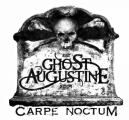Tribute to Laurel Hill Cemetery
In late 1835, John Jay Smith, a Quaker and librarian, recorded in his diary: “The City of Philadelphia has been increasing so rapidly of late years that the living population has multiplied beyond the means of accommodation for the dead…on recently visiting Friends grave yard in Cherry Street I found it impossible to designate the resting place of a darling daughter, determined me to endeavor to procure for the citizens a suitable, neat and orderly location for a rural cemetery.” Smith’s very personal experience ultimately had very public implications, as less than one year later, this grieving father founded Laurel Hill Cemetery with partners Nathan Dunn, Benjamin W. Richards and Frederick Brown. When Smith conceived of Laurel Hill, he envisioned something fundamentally different from the burial places that came before it, and the site has continued to hold an important place of distinction as one of the first cemeteries of its kind. Key concepts to Laurel Hill’s founding were that it had to be situated in a picturesque location well outside the city; that it had no religious affiliation; and that it provided a permanent burial space for the dead in a restful and tranquil setting. In an era when the city suffered from crowding, disease and scarcity of public space, Laurel Hill offered an “alternative environment.” Previously, churchyards were the only places available to bury the dead, and they were often as crowded and unsanitary as the streets that bordered them. Worse yet, rapid industrialization and population growth commonly led to the disinterment of burial grounds to make way for roads and buildings. Laurel Hill’s founding is deeply rooted in the cultural history of Philadelphia’s urbanization, and in the simultaneous development of crafted, suburban sanctuaries of nature and retreat just beyond the city’s limits. Laurel Hill was not only established as a permanent, non-sectarian burial place for the dead, but also as a scenic, riverside sanctuary for the living. Selecting an appropriate site was one of the first challenges facing the cemetery’s founders. Several options fell through before a group of proprietors, led by Smith, were able to purchase a former estate known as Laurel Hill in 1836. From 1797 to 1824, the 32-acre property located north of the city overlooking the Schuylkill River had been the county seat of merchant Joseph Simms. The estate was later used as a farm, a tavern and a boarding school. Laurel Hill’s proximity to the River was perhaps the site’s most important selling point for its founders, in an effort to establish the Cemetery as “a place apart.” Following an afternoon leisure trip to Laurel Hill in 1838, one early Philadelphian noted in his diary, “Wandered about the cemetery for half an hour, looking at monuments & gravestones…and gazing at the beautiful view up and down the river.” Views of the Schuylkill River have always been an important component of the site’s visual character, and a central part of the Laurel Hill Cemetery experience for visitors of past and present. Membership Each and every member of the Friends is vital to our organization. The support of our membership base lends an essential voice to our educational and preservation efforts. As Laurel Hill founder, John Jay Smith, noted in his diary, “education & entertainment were a part of my initial vision to make Laurel Hill a place that is desirable as well as valuable.” Our members ultimately help to ensure this vision, thus preserving Laurel Hill for future generations. Benefits of Membership with the Friends of Laurel Hill Cemetery: ~ Discounts on selected Laurel Hill Cemetery programs and events, including our famous Halloween tours. ~ Discounts on selected Laurel Hill Cemetery merchandise, including books and apparel. ~ Discounts on Laurel Hill Cemetery library services, including archival research and photocopying. ~ A one-year subscription to the FLHC quarterly newsletter, The Laurel Hill Ledger. ~ An invitation to our annual Board Elections. To donate and become a member online, visit their online membership page. Their secure site makes it easy and convenient to become a member and support the Friends.
